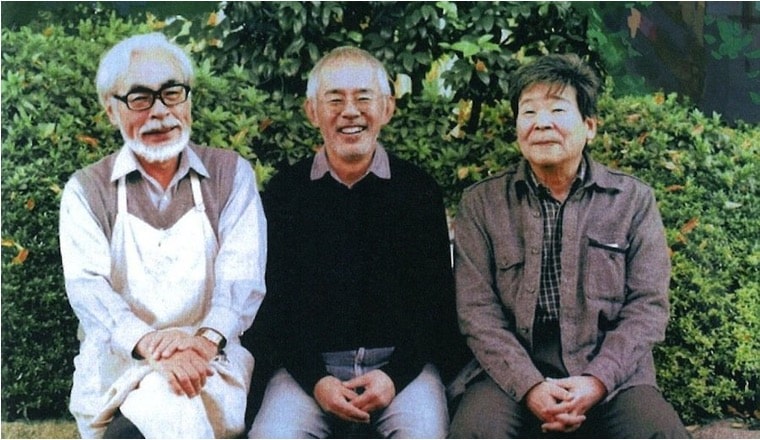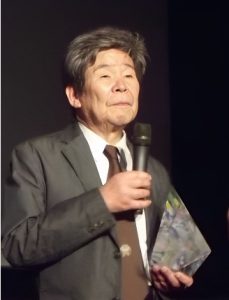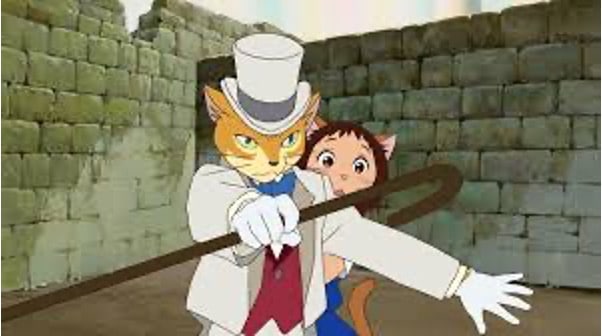By Jeremy Fuscaldo
Having attended and tabled at many conventions and marketplaces, Anime NYC 2025 was my very first time at this particular event. I was pleasantly surprised to see a panel dedicated to the history of Hayao Miyazaki and the many filmmakers who helped shape Studio Ghibli. The panel was titled Beyond Miyazaki: The Directors of Studio Ghibli.


Curious, I went to check it out, and I’m glad I did. The presentation explored the directors and animators who contributed to some of Studio Ghibli’s most defining works. Although I arrived a minute or two late, I made it in time for the discussion, which was hosted by Evan Minto. The panel spotlighted films directed by animators who worked alongside Miyazaki, often with him serving in a smaller creative role. As someone who grew up with Ghibli films for more than 25 years, it was fascinating to learn about the studio’s broader creative history. Each director brought a unique artistic vision that left a lasting mark on the Ghibli legacy.
Isao Takahata: The Mentor and Innovator
The panel began with Isao Takahata, Miyazaki’s mentor and one of Studio Ghibli’s co-founders. Before Ghibli, he worked at Toei Animation and directed Hols: Prince of the Sun (1968) and Heidi: Girl of the Alps (1974), both of which were popular in Japan.


His first Ghibli feature surprised me—it turned out to be one of my personal favorites: Grave of the Fireflies. The heartbreaking film, adapted from Akiyuki Nosaka’s semi-autobiographical short story, tells the story of siblings struggling to survive the firebombing of Kobe. It premiered as a double feature with Miyazaki’s My Neighbor Totoro. While Grave of the Fireflies was expected to succeed, Totoro was considered a risk since Ghibli had never made a children’s film like it before.
Minto also discussed Takahata’s other films: Only Yesterday, Pom Poko, My Neighbors the Yamadas, and The Tale of the Princess Kaguya. Watching the clips, I noticed how Takahata continually pushed animation beyond conventional styles. My Neighbors the Yamadas and Princess Kaguya especially stood out for their painterly, traditional techniques. Both films looked visually unlike anything else in the Ghibli canon. Sadly, Princess Kaguya was Takahata’s final film before his passing in 2018.
Yoshifumi Kondō: A Naturalistic Touch
The next filmmaker highlighted was Yoshifumi Kondō, whose debut film Whisper of the Heart became infamous for its overworked production schedule. The coming-of-age story took a naturalistic approach to human animation and even incorporated a Japanese rendition of John Denver’s “Take Me Home, Country Roads.” A fun fact: the design of the main character later inspired the “Lo-Fi Beats Girl” that has become iconic on YouTube.
Other Key Figures: Mochizaki, Morita, and More
The panel also touched on Hiroyuki Morita, who directed The Cat Returns, and Tomomi Mochizuki, a TV veteran chosen by Miyazaki to direct Ocean Waves (1993). Miyazaki wanted a younger director’s perspective, as the film centered on the lives of high schoolers. The Cat Returns, meanwhile, explored what would happen if the mysterious Cat Baron became real. Based on a manga, it tells the story of a girl who gains the ability to speak with cats and eventually transforms into one herself.


Goro Miyazaki: A Divisive Legacy
One of the most controversial figures discussed was Goro Miyazaki, Hayao’s son. Initially uninterested in animation, Goro eventually directed Tales from Earthsea in the mid-2000s. According to Minto, tensions between father and son strained production, and the final film fell short of expectations.
Later, Goro experimented with full CGI films like Ronja, the Robber’s Daughter and Earwig and the Witch. While I reserve judgment until I’ve seen an entire film, the clips shown didn’t match Studio Ghibli’s usual visual quality. Still, Goro made significant contributions outside of filmmaking, helping to establish both the Ghibli Museum (opened in 2001) and Ghibli Park (opened in 2022).
Hiromasa Yonebayashi: A New Generation
The final director highlighted was Hiromasa Yonebayashi, the youngest person to direct a Ghibli feature. His film The Secret World of Arrietty (2010), adapted from the novel The Borrowers, left a personal impression on me since I saw it in theaters with my grandmother before her Alzheimer’s diagnosis. Yonebayashi later directed When Marnie Was There, which earned an Academy Award nomination in 2015.


After leaving Ghibli, he co-founded Studio Ponoc, where he directed Mary and the Witch’s Flower and contributed to Modest Heroes.
Final Reflections
Evan Minto delivered an engaging and educational panel that covered an impressive amount of history in a short time. I left inspired by the artistry and work ethic of the directors who helped shape Ghibli’s legacy.
Minto concluded with resources for further learning, including documentaries and the official Ghibli Wiki:
Documentaries:
Resources:
For more coverage on AnimeNYC 2025, you can find it right here in the AnimeNYC 2025 archive on The Beat!







